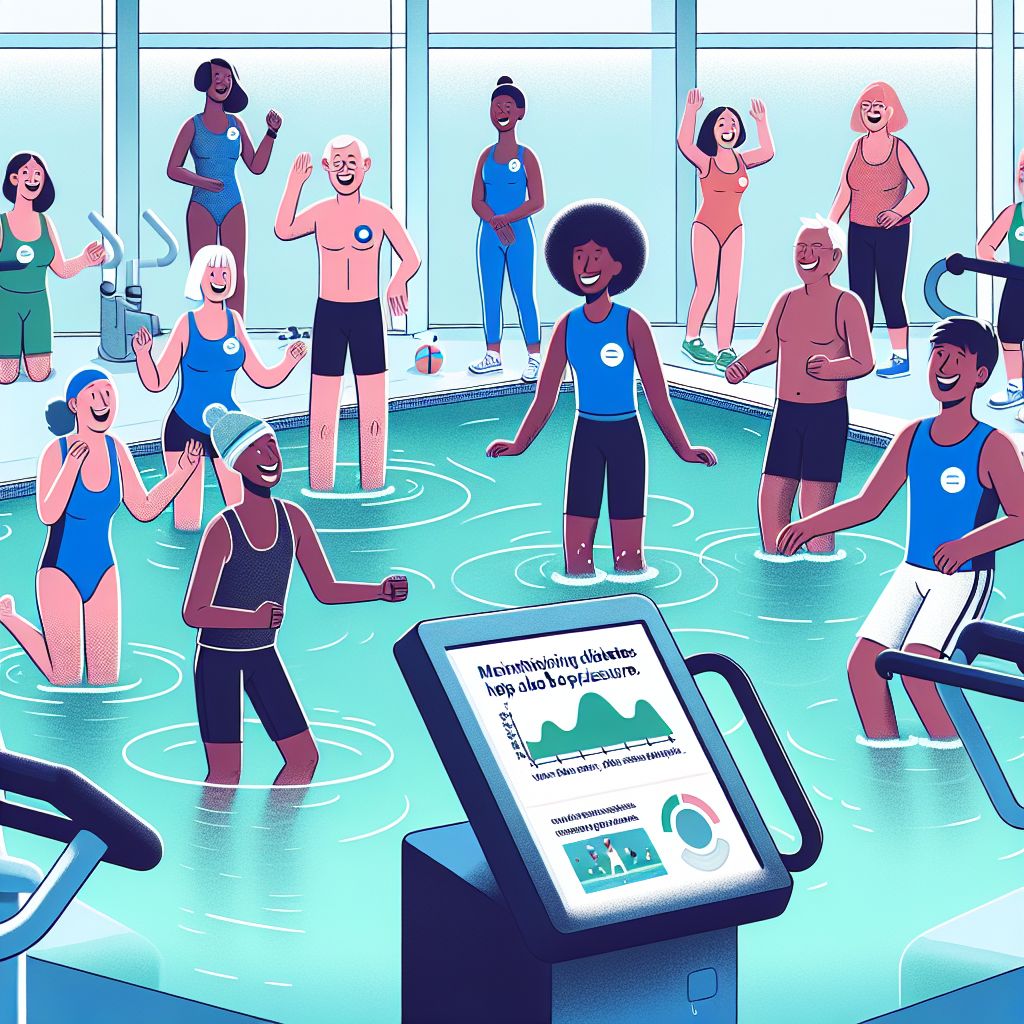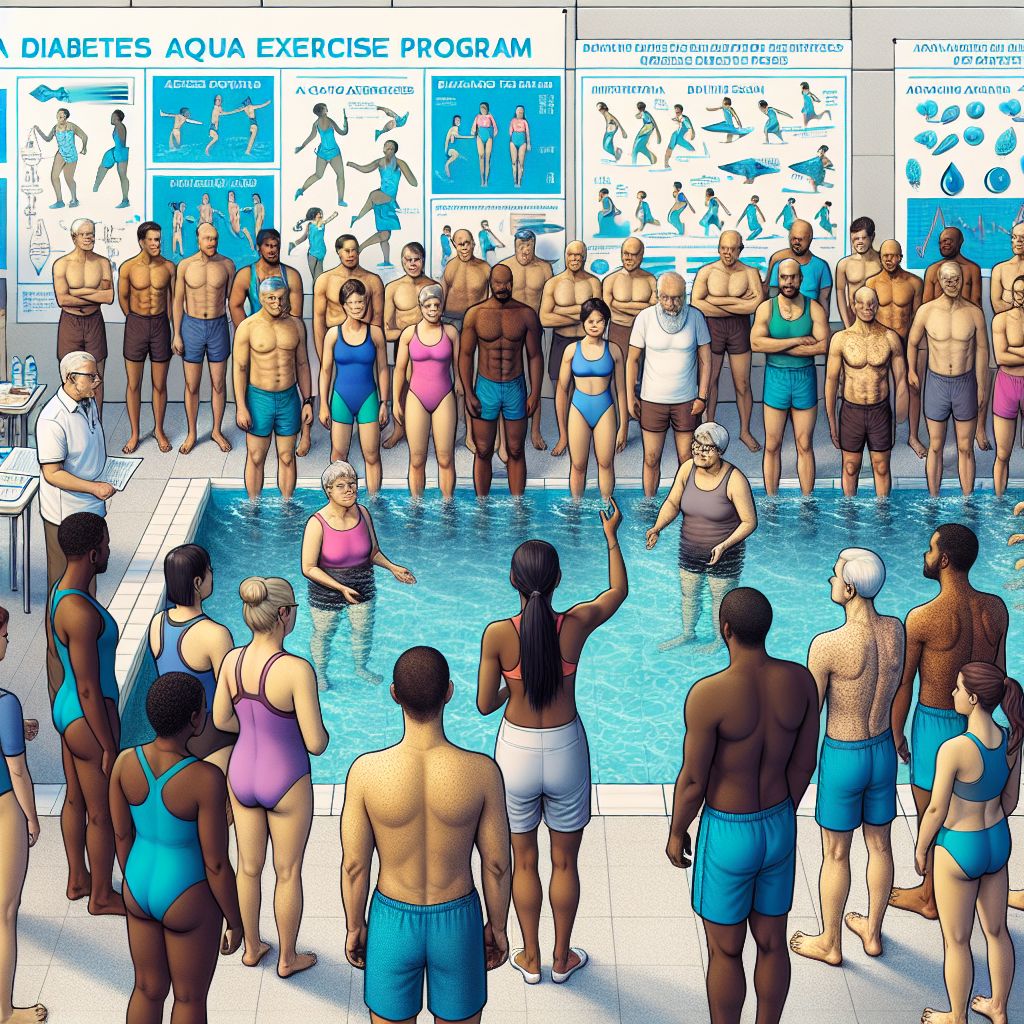
-
Aqua exercises can significantly help manage diabetes by improving blood sugar control.
-
The buoyancy of water reduces joint strain, making workouts more comfortable for those with physical limitations.
-
Water-based workouts can be as effective as traditional exercises for those with diabetes, but with added benefits.
-
Before starting an aqua exercise program, it’s important to find a suitable pool and gather the necessary gear.
-
Setting personal fitness goals and tracking progress is key to staying motivated and seeing results.
Why Water-Based Exercise is a Win for Diabetes Management
When you think about managing diabetes, picture this: the gentle resistance of water, the sound of splashing, and the feeling of your body moving smoothly through the pool. This isn’t just a relaxing day out; it’s a scientifically-backed way to take charge of your health. Water-based exercise isn’t just fun; it’s a powerful tool in managing blood sugar levels.
The Science of Aquatic Exercise and Blood Sugar Control
Let’s dive into the science. When you exercise in water, your muscles work harder due to water resistance. This means you’re getting a great workout without even realizing it. Most importantly, these exercises help improve insulin sensitivity, which is crucial for managing diabetes. Because your body is cooler in water, you may also find you can work out for longer, burning more calories and improving cardiovascular health.
Reducing Joint Strain: The Buoyancy Benefit
Now, consider how exercising in water feels on your body. The buoyancy provided by water means less weight on your joints. This is a game-changer if you have diabetes-related joint pain or mobility issues. By reducing strain, you’re more likely to stick with your exercise routine, leading to consistent blood sugar management.
Aqua Fitness vs. Traditional Workouts: A Comparison
|
Aspect |
Aqua Fitness |
Traditional Workouts |
|---|---|---|
|
Impact on Joints |
Low |
Varies |
|
Cardiovascular Intensity |
Moderate to High |
Low to High |
|
Calorie Burn |
High |
Varies |
|
Cooling Effect |
Yes |
No |
|
Fun Factor |
High |
Varies |
Compared to traditional workouts, aqua fitness provides a unique combination of low-impact exercise with the potential for high-intensity and high-calorie burn, all while keeping you cool and making it fun.
Getting Started with Your Diabetes Aqua Exercise Program

Before you jump in, let’s get prepared. Finding the right facility is your first step. Look for pools that offer specific aqua fitness classes or open swim times. Ensure the facility is clean, well-maintained, and has knowledgeable staff. If you’re unsure, ask if they have experience working with people who have diabetes.
Finding the Right Facility: Pools and Aqua Centers
Start by researching local community centers, YMCAs, or fitness clubs. Check out their schedules and see if they offer aqua aerobics classes or lap swimming times. Don’t forget to inquire about the temperature of the pool — warmer water can be more comfortable for those with diabetes.
Essential Gear for Your Water Workout
You won’t need much to get started with water exercises, but a few key items will make your experience better:
-
Swimwear that’s comfortable and provides the right amount of support
-
Aquatic shoes to protect your feet and improve traction
-
A water bottle to stay hydrated, even though you’re in water
-
If you’re into gadgets, a waterproof fitness tracker can be motivating
Remember, the right gear can make a difference in your comfort and performance in the water.
Setting Personal Goals and Monitoring Progress
Before you dive in, set some personal goals. What do you want to achieve with your water workouts? It could be improving blood sugar levels, losing weight, or increasing stamina. Keep a log of your workouts and monitor your progress. Celebrate your successes, no matter how small they seem. This will help you stay on track and motivated.
Dive into the world of aqua aerobics, where the music is upbeat, and the water is just right. Group classes offer a sense of community and accountability, while solo routines provide the freedom to work at your own pace. Whether you’re following an instructor’s choreography or creating your own sequence of water-based exercises, you’ll be boosting your heart rate and enjoying every splash.
The Joy of Aqua Aerobics: Group Classes and Solo Routines
Group classes are a fantastic way to meet people and stay motivated. The instructors can provide modifications for different skill levels, ensuring everyone gets a good workout. Solo routines, on the other hand, allow for flexibility. You can focus on exercises that you enjoy or that target your specific health goals. Either way, you’re in for a fun and effective workout.
Swimming for Success: Tailoring Laps to Your Fitness Level
Swimming laps can be a meditative and invigorating exercise. Start with a comfortable stroke and pace, and gradually increase the intensity as your fitness improves. Remember, consistency is key. Even a few laps can contribute to better blood sugar control and overall health.
If you’re new to swimming, consider taking a few lessons to learn the basics. This will help you feel more confident in the water and ensure you’re swimming efficiently. As you progress, you can experiment with different strokes to keep your workouts interesting and challenging.
Resistance Training Underwater: Equipment and Exercises
Resistance training isn’t just for the gym. Underwater, you can use foam dumbbells, paddles, or even your own body resistance to build strength. Start with simple movements like arm curls and leg kicks, and as you get stronger, incorporate more complex exercises.
Overcoming Challenges: Staying Motivated and Safe
It’s natural to face hurdles on your health journey. The key is to anticipate them and have strategies in place. Blood sugar fluctuations during exercise can be a concern, but with proper planning and monitoring, you can manage them effectively.
Dealing with Fluctuating Blood Sugar Levels During Exercise
Always check your blood sugar before and after workouts. If you’re going low, have a small snack or glucose tablet on hand. It’s also a good idea to inform the pool staff about your condition, so they’re prepared in case you need assistance.
If you find your blood sugar tends to drop during exercise, consider adjusting the timing of your workouts or the amount of insulin you take beforehand. Consult with your healthcare provider to create a plan that’s tailored to your needs.
Maintaining Consistency: Tips to Keep You Going
Set a regular schedule for your aqua workouts and stick to it. To keep things interesting, vary your activities. Mix up laps with aqua aerobics or resistance training. Find a workout buddy or join a class to build a support network that keeps you accountable.
And don’t forget to celebrate your milestones. Whether it’s swimming a new distance or just feeling more energetic, acknowledging your achievements will boost your motivation.
Pool Safety and Hygiene for People with Diabetes
Pool safety is paramount. Make sure to wear non-slip shoes when not in the water to prevent falls. Keep your feet clean and check them regularly for cuts or scrapes, as diabetes can slow down healing. Also, choose well-maintained pools to reduce the risk of infections.
Aqua Exercise Success Stories: Real Results from People with Diabetes

Hearing about others who have successfully managed their diabetes through aqua exercise can be incredibly inspiring. Real people, just like you, have seen significant improvements in their blood sugar levels, weight, and overall well-being.
-
Mark, who struggled with joint pain, found relief and better glucose control through water aerobics.
-
Susan, who was hesitant to exercise, now swims regularly and has more energy to enjoy life.
-
John, who feared the impact of exercise on his blood sugar, now manages it confidently with regular pool workouts.
These stories are not just anecdotes; they’re backed by science. The physical activity guidelines for adults with type 2 diabetes recommend at least 150 minutes of moderate-intensity aerobic activity per week, and aqua exercises fit the bill perfectly.
Inspiring Transformations: Personal Journeys Shared
Consider the story of Lisa, a woman in her fifties with type 2 diabetes. Initially, she struggled to find an exercise routine that didn’t exacerbate her knee pain. After joining an aqua aerobics class, not only did her pain diminish, but her A1C levels also dropped significantly. Lisa’s story is a testament to the transformative power of water exercise for people with diabetes.
These stories remind us that with the right approach, diabetes doesn’t have to hold you back from enjoying an active lifestyle. Moreover, the social aspect of aqua exercise programs often leads to a stronger sense of community, providing both emotional and practical support.
The Ripple Effect: How Starting Can Lead to Overall Lifestyle Changes
Starting an aqua exercise program can be the first step toward a healthier lifestyle overall. For many, it’s a gateway to making better nutritional choices, engaging in other physical activities, and paying closer attention to blood sugar levels. It’s about creating a ripple effect; one positive change leading to another.
Community Support: Finding Encouragement in Water Exercise Groups
Don’t underestimate the power of community. Joining a water exercise group can offer a sense of belonging and encouragement. Sharing tips, experiences, and challenges with others who understand what you’re going through can make a world of difference in staying motivated and committed to your health goals.
Frequently Asked Questions (FAQ)
1. What Makes Water Exercise Good for Diabetics?
Water exercise is beneficial for diabetics because it offers a low-impact, high-resistance environment that is gentle on the joints. It helps improve cardiovascular health, blood sugar control, and can be done even when other forms of exercise might be too painful or difficult.
2. How Often Should I Exercise in Water?
For the best results, aim for at least 150 minutes of moderate-intensity water exercise per week, spread across several days. Consistency is key, so try to set a regular schedule that works for you and stick to it.
3. Can Water Exercise Replace My Current Workout Regime?
Water exercise can certainly complement or even replace your current workout regime, especially if you require a low-impact option. It’s always a good idea to include a variety of activities in your routine for balanced fitness.
4. What Should I Do if I Experience Low Blood Sugar During Exercise?
If you experience low blood sugar during exercise, it’s important to stop exercising and treat the hypoglycemia immediately. Keep a fast-acting carbohydrate snack handy, such as glucose tablets or a small juice box, to quickly raise your blood sugar levels.
5. How Can I Track My Progress with Aqua Exercises?
Tracking progress can be done in several ways. You might use a waterproof fitness tracker to monitor your activity levels, keep a workout journal to note the exercises you do and how you feel, or regularly check in with your healthcare provider to discuss any changes in your health metrics.
In conclusion, water exercise programs offer a refreshing and effective way to manage diabetes. They provide a unique blend of cardiovascular and resistance training that’s easy on the joints and enjoyable to do. With the right preparation and a positive mindset, you can make a splash in your diabetes management and improve your overall health. Remember to start slow, set achievable goals, and enjoy the process. Your body—and your blood sugar—will thank you for it.



Leave a Reply